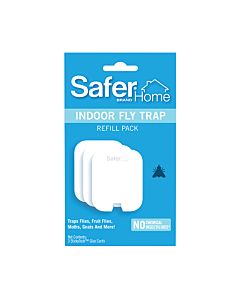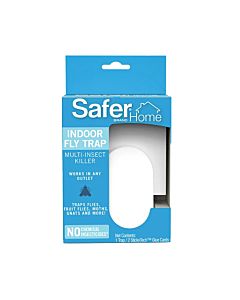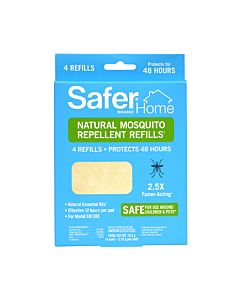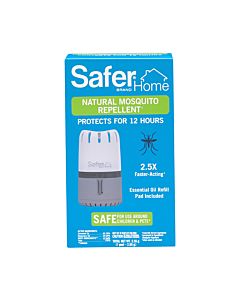

Whiteflies are also a bit sneaky. Adult whiteflies lay eggs on the underside of leaves. It could be argued that whiteflies “hide” their eggs there, and in many instances, the eggs do escape detection. The adult whitefly female can lay hundreds of eggs on the underside of leaves, usually in a circular pattern. In hotter weather, one whitefly can even go from egg stage to grown adult in just 16 days. Since whiteflies live for a month or two, in warmer climates and in greenhouses, the reproduction cycle is almost continuous and the growth of the population is geometric.
You’re likely to find whiteflies in warmer regions, including greenhouses. Then again, whiteflies are survivors, and they won’t turn away from cooler temperatures. They can attack fruits, vegetables and ornamental plants with equal enthusiasm. No matter where you live, it’s important to know how to kill whiteflies and protect your plants.
How to Protect Your Plants from Getting Infested with Whiteflies

Whiteflies take their nourishment from the host plant by sucking on plant juices. When a plant has multiple whiteflies attached, the plant becomes weak and is more prone to viral diseases that whiteflies carry. Whiteflies then turn the juices into a thick, gooey substance called honeydew. The honeydew attracts sooty mold and a blackish fungus — in some cases, the honeydew covers so much of the plant that it is not able to photosynthesize properly. If you find leaves that are damaged from whiteflies, cut them off immediately.
If you’re looking for other ways to control whiteflies, chemical pesticides are not always the best solution. There are two main drawbacks to this approach: 1) Whiteflies often develop a tolerance to the toxins, much like viruses mutate to make certain antibiotics ineffective. 2) Pesticides are indiscriminate killers. You want to kill whiteflies, but you want whitefly-destroying bugs to live.
Your best bet for stopping a whitefly infestation is to be vigilant before an infestation occurs. Do a thorough and careful inspection of all your plants twice a week — inspect them more frequently if you have experienced an outbreak. Remember that the pre-adult whiteflies are almost clear, so they appear to be the same color as the leaves. Be sure to check the undersides of leaves as well, since most whiteflies are drawn to this area.
8 Safe and Natural Ways for Getting Rid of Whiteflies

So what are the options for ridding your garden or home of a whitefly infestation? Here are some methods for killing whiteflies in the most effective, environmentally sensitive way. These can be done alone, but they can also be combined for greater impact:

1. Controls — Insecticidal soaps & neem oils are best if you have children & pets in the house. Both leave a small environmental footprint. Neem oils, like our Safer® Brand Neem Oil Ready-to-Use Spray, work by suffocating the insect, but you should follow the instructions exactly to prevent burning or scalding plants. Test plants by administering neem oil to a small section and waiting 24 hours to see if burning/scalding occurs. Soaps and oils kill on contact, so don’t forget to reapply two or three times. These solutions work best if the temperature is less than 90 degrees. Hotter temperatures also encourage browning or wilting leaves.

2. Aluminum Reflective Mulch — The mulch makes it difficult for whiteflies to find the host plants. They are, in a sense, blinded by the light. This approach is particularly good for protecting your vegetables from diseases that whiteflies can transmit.

3. Yellow Sticky Traps — Use these to collect whiteflies lurking among your crops. Not only will they capture annoying little whiteflies in your home or garden but will also get rid of aphids, thrips, leap miners, gnats and fruit flies. These flies are drawn to yellow and our Safer® Brand Houseplant Sticky Stakes is sticky enough to catch the pests.

4. Water — Use a jet of water to blast whiteflies and wash them off your plants and leaves. You should then rub a weak solution of insecticidal soap onto the leaves in the late afternoon. Repeat this process every week to control and get rid of whiteflies.

5. Vacuum — This is one of the best ways to get rid of whiteflies on plants if the infestation is limited to a few plants or a small area.

6. Natural Predators — You can purchase spiders, female beetles, parasitic wasps and lacewings at most gardening shops and add them to your garden to battle whiteflies without hurting beneficial plants. While female beetles and lacewings eat the eggs of whiteflies, spiders “net” the grown whiteflies for food and parasitic wasps lay eggs inside the whitefly’s body. The larvae use the host insect as food before moving on to the adult phase.
However, ants are insects you don’t want if you have whiteflies. Ants eat the honeydew and they are focused on protecting this food source. If you’re introducing beneficial bugs to your garden, put ant traps at the stems of plants with whiteflies. You should also put traps under plants that are growing close to the infected ones.

7. Environmental Controls — Pruning the affected vegetation may be helpful in reducing whiteflies. Again, put ant baits on the ground to control ants.

8. Nitrogen Levels — Check the soil content of your garden or around trees to make sure you don’t have too much nitrogen in the soil. With good intentions, people may use fertilizer that has been highly enriched with nitrogen, only to be inadvertently creating an environment that’s conducive to whiteflies.
You can also consider growing your young plants indoors until they are big enough to survive an attack. This is usually in late winter to early spring, depending on your location. If you can’t keep your young plants inside, cover them with something that lets the sun in but keeps the whiteflies out.
Symptoms of Whitefly Damage
Whiteflies, in both the nymph and adult stages, feed on plants by sucking juices from the plant tissue. As a result, an infected plant may not appear to be fully developed.
Another symptom is honeydew, a sticky material, that is secreted on the plant leaves by the whiteflies.
Results of Whitefly Infestation
Plants may become weakened from the feeding of whiteflies. They may become so weakened that they may become more susceptible to disease or they may even die.
The honeydew whiteflies secrete can attract black fungus and sooty mold.
Viral diseases can be transported by whiteflies, resulting in severe damage or death to the plant.
Controls
What?
The use of insecticidal soaps and neem oil are two excellent methods of dealing with soft-bodied, garden insects such as whiteflies.
How?
Neem oil products work by suffocating the insect. Use all neem oil products by following the instructions since, as an oil, there is greater risk of phototoxicity (burning). Avoid using sulfur based fungicides within the active period (5-7 days) of the neem oil product. These two products combined greatly increase the risk of plant burn.
Safer® Brand offers a variety of whitefly control products to help control and eliminate this garden pest and revive your plants. Please check out our whitefly control products for more details about how they work and how, when, where they should be applied.
Carefully read and follow all instructions on the product packaging for best results. It is recommended with any pesticide to test plants for sensitivity to the product. Spray a small section of the plant in an inconspicuous area and wait 24 hours before applying full coverage.
When?
Since these formulas are contact killers and they do not persist in the environment, several applications may be needed for control. As a general rule, much like watering, do not use these products in the peak of the day or when temperatures exceed 90 degrees F to avoid wilting or browning of the leaves.
Why Choose a Natural Solution?
Insecticidal soaps and neem oils can be used around children and pets. They break down into their natural elements within 7 to 10 days leaving no residual impact on the environment.
They are highly preferable to synthetic pesticides with toxins that can kill beneficial insects and cause long-term detrimental effects on the environment. Another negative effect of the chemical pesticides is the whiteflies' possible buildup of resistance to the chemicals in the pesticides.





